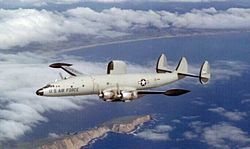962d Airborne Air Control Squadron (962 AACS)  | |
|---|---|
 Squadron E-3G Sentry (AWACS) aircraft on the ramp at Elmendorf | |
| Active | 1943–1945; 1955–1969; 1986–present |
| Country | |
| Branch | |
| Role | Airborne Battle Management Command and Control |
| Part of | Pacific Air Forces |
| Garrison/HQ | Joint Base Elmendorf-Richardson |
| Motto(s) | Eyes of the Eagle [1] |
| Anniversaries | 22 September (YUKLA 27 crash) |
| Engagements | European Theater of Operations [1] |
| Decorations | Air Force Outstanding Unit Award [1] |
| Commanders | |
| Current commander | Lt Col Jared Lemmons |
| Notable commanders |
|
| Insignia | |
| 962d Airborne Air Control Squadron emblem [a] [1] |  |
| 962d Airborne Warning & Control Sq emblem [b] [2] |  |
| Patch with 962d Airborne Early Warning and Control Squadron emblem [c] [2] |  |
| Squadron fuselage code (World War II) [d] | C |
The 962d Airborne Air Control Squadron is part of the 3rd Wing at Joint Base Elmendorf-Richardson, Alaska. It operates the Boeing E-3G Sentry aircraft conducting airborne battle management command and control missions. The squadron's first predecessor was the 862d Bombardment Squadron, a heavy bomber unit that saw combat during World War II in the European Theater of Operations, where it participated in the strategic bombing campaign against Germany. Toward the end of the war, the squadron operated fighter aircraft, acting as a scouting force for bomber formations. After V-E Day, the squadron returned the United States and was inactivated.
Contents
- Mission
- History
- World War II
- Airborne warning and control
- Lineage
- Assignments
- Stations
- Aircraft
- References
- Notes
- Bibliography
The second predecessor of the squadron was activated at Otis Air Force Base, Massachusetts as the 962d Airborne Early Warning and Control Squadron in 1955. It performed surveillance and warning missions off the Atlantic coast until inactivating in 1969. The two squadrons were consolidated into a single unit in 1985. The consolidated squadron was activated in Alaska the following year and has provided surveillance, detection and control of airpower since then.




